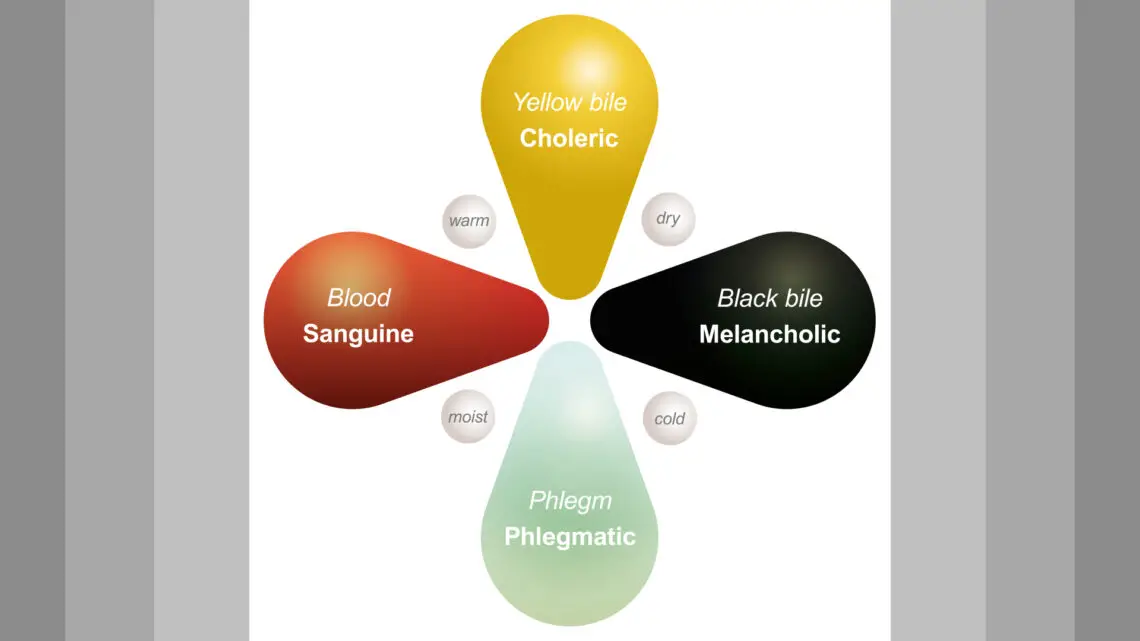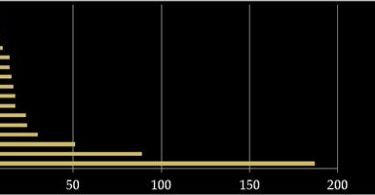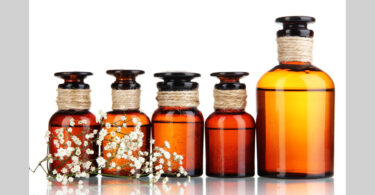There is no more interesting and necessary study for the homoeopathic physician than that of constitutions. Homoeopathy deals with individuals primarily and the special and morbid tendencies of these individuals. The peculiarities of our patients demand our first attention, and although the scope of this paper cannot more than enter this almost inexhaustible field, it is to be hoped that something practical may be elicited in it and the discussion that it is hoped will follow.
Hahnemann never left a truer lesson on the pages of his writings than when he taught us to regard the uncommon, peculiar and characteristic symptoms of the patient as paramount, and the most successful prescribers of our school from all time have verified the value of the lesson many times over. Recent works on medicine pay but little attention to diathesis or temperament.
Bacilli and their toxins rule the day, yet for these the soil must be in a receptive condition and its nature determines the modification and speed of their growth. In other words, there must be a special inclination of the patient to a specific disease beside the mere accident of germ infection. Also, in diseases wherein, so far as we know, germ infection plays no part, there are often modifications of individual influence.
What is meant by temperament? Jonathan Hutchinson, in his “Pedigree of Disease,” defines it as “The sum of physical peculiarities of an individual exclusive of all tendencies to disease.” He further points out that different temperaments give different degrees of peculiarity to disease, but they do not evolve the disease itself.
A strongly marked temperament is consistent with perfect health. What is meant by diathesis? According to the same authority a diathesis is a bodily condition in which an individual is prone to suffer from some peculiar type of disease, some diathesis being acquired, others inherited; some are of a transient nature, some permanent. In other words, temperament is physiological and diathesis pathological.
Diathesis should not be confounded with dyscrasia, which term implies ” the immediate and peculiar effects of disease;” nor with cachexia, which expresses an extreme degree of bodily debility consequent upon advanced and severe dis- ease. In recapitulation, temperament implies health, diathesis a tendency to disease or perhaps a latent disease, while dyscrasia and cachexia are morbid conditions.
There have been many attempts to classify temperaments and constitutions and also diatheses. We are all familiar with Hahnemann’s three dyscrasias psora, sycosis and syphilis, corresponding in remedies to Sulphur, Thuja and Mercurius, respectively, and as a practical working hypothesis it has stood the test of time.
We know also of Grauvogl’s constitutions, called the hydrogenoid, the oxygenoid and the carbo-nitrogenous, each of which has its list of remedies. The classification of temperaments into sanguine, nervous, bilious and lymphatic, with their varying tendencies, is a most useful one and will often give valuable indications as to the environment in which our remedies exercise their most favorable action.
They are useful additions to our means of finding the simillimum. Throughout nature this is illustrated. A plant will thrive best in that soil and exposure best suited to its peculiar needs, one corresponding to its special character. Those who have ascended mountains will recall what clearly defined boundaries and character of soil the different varieties of trees and plants choose.
Within their respective belt they thrive and rejoice in their vigor- ous life. They grow to some extent above and below that belt until the conditions are such that they can no longer exist. It is precisely so with drugs in their capacity to manifest their peculiar life-disturbing function. Each drug has its own special temperament, condition, modality, times and season that suit it best of all, and within which it is able to show its genuine and real character.
Let us briefly call attention to some of these conditions of our remedies. Aconite. This is par excellence a remedy for the sanguine temperament and rarely a remedy for any diathesis; it suits the robust constitution, the full, active circulation; the rapidity with which such a temperament is invaded, the circulatory storm that sweeps these constitutions, the tendency to congestions, all point to Aconite.
Gelsemium with its sickly apathy, its dulness, drowsiness and stupidity will never find a place here. Causticum, however, suits those of dark hair, rigid fibre, and greatly resembles Aconite. Ferrum and Aurum are also sanguine temperament remedies.
Nux vomica and Ignatia are two great remedies for the nervous temperament; Nux for males and Ignatia for females. Nux acts best in spare, slim people; not so well in the fleshy, the irascible, the quick acting, the sallow and yellow. It may counterfeit the sanguine at times with its red cheeks, but these are on a yellow background, and this shows the bilious mixture, for seldom are temperaments pure.
Such patients will suffer from mental strain and are worse from inactive, sedentary habits. A suppression of this nervous activity results disastrously. Sepia acts well in men and women who are puffed and flabby, who have a yellow, blotched, brown and dirty skin; who are inclined to sweat in the armpits, genitals and back; who suffer from hot flashes and morning headache.
In other words, a mixture of the lymphatic and bilious. Pulsatilla is a purely lymphatic remedy. Note its timorous, fearful state of mind and sluggish venous conditions. This effeminate disposition, this blue-eyed, freckled damsel that hasn’t much of a will of her own, lacks backbone, is the very type that offers the most suitable soil for the action of Pulsatilla.
To be sure Pulsatilla can act under less favorable conditions, can show its power, for instance, on a high-strung, passionate, determined gentleman from the South; but here our drug is hampered and dwarfed in its action. Remember a drug’s best natural soil, but do not forget that it can act in other less favored individuals.
Sulphur is another remedy for lymphatic constitutions, suiting like Pulsatilla the light-complexioned, easily angered, though, too, it suits the dark, being a mainstay in the treatment of the negro, but here perhaps owing to the large amount of scrofula in this race.
The skin eruptions, the offensive odors, the sluggishness of the lymphatic temperament is here. Agaricus is suitable to light hair, lax skin and muscles, and to old people with indolent circulations. Alumina and Conium suit dry, thin, withered subjects and old people.
Graphites is applicable best to the fleshy, sad, constipated individual with inclination to delayed menses. Secale suits the tall and scrawny, the lax muscular fibre, the feeble and cachectic, the old and decrepit. Silicea suits the large headed, the defective growing, the nervous, the non-resisting, the leucophlegmatic and sanguine. Calcarea carbonica.
This a remedy for the large, fat, unwieldy body, the rapidly growing, the sluggish, the over-active, the self- willed; but the great field of this remedy is in the correcting of diatheses to which it is specially adapted. Thuja is a remedy for the dark, black haired, the dry fibre, those of a lymphatic tendency and lethargic nature.
All this is but suggestive and might be enlarged upon to entirely beyond the limits of this paper. The lesson I would impress is the value of taking these temperaments into consideration in pre- scribing, and this may be well illustrated in treating a Bryonia or Rhus rheumatism in a Nux temperament. An occasional dose of Nux will surely and certainly help in the cure.
The treating of a Oenanthe crocata epilepsy in a Calcarea temperament will be for- warded by a dose or two of Calcarea as an intercurrent. Diatheses. There are many conditions called diatheses, and oftentimes it is difficult to say where a diathesis ends and a dyscrasia begins.
Constitutional syphilis, for instance, is a dyscrasia. A malarial diathesis is different from a malarial cachexia; the former is an acquired tendency to contract the malarial poison, and the latter is constitutional saturation with the poison. The so-called Oxalic acid diathesis is a form of dyspepsia which is perhaps frequently characterized with sudden outbursts of irascibility among other symptoms.
The scrofulous diathesis is practically Hahnemann’s psora theory, and its two forms, different phases; one is tuberculosis, and here Aurum, Pulsatilla, Agaricus and Calcarea are the remedies; the other is a phlegmatic form which is an attenuated tubercular, and points to Mercurius, Hepar and Silicea.
The tonsillar diathesis, with its glandular enlargement and nar- row chest, is one that may require such remedies as Baryta carbonica. This diathesis nearly always improves at puberty, and therefore, it is mostly useless to remove tonsils and vegetations. The proper treatment is gymnastic exercises to improve the chest capacity; when this is done the lymphoid tissue will surely disap- pear by atrophic changes, and the enlarged glands will become normal. I have observed this in a large number of cases. Calcarea and other remedies will work wonders in this diathesis.
In the gouty diathesis heredity is marked, and remedies like Nux, Lycopodium, Staphisagria and Coccus cacti will be needed. Colchicum will not cure in a purely Colchicum case engrafted upon a Staphisagria constitution unless that remedy be given as an intercurrent.
The alternation of our forefathers in Homoeopathy was based largely upon this application of remedies. The haemorrhagic diathesis will call for remedies like Phosphorus. The rheumatic diathesis, in which, by the way, throat affections are common, will require remedies like Actea, and perhaps some of the potash preparations.
The catarrhal diathesis is quite similar to the rheumatic; such subjects take cold easily, they have coryzas, diarrheas and dermatites. Piulsatilla seems to be the great remedy in these cases; for the attacks, of course, Aconite, Bryonia and Arsenicum will be needed, but to correct the tendency the constitutional remedy may be sought for.
Hering suggested Senega, which he says suits phlegmatic or fat people predisposed to catarrh, or to the sluggish who react from colds indifferently. It is a remedy that will repay a careful study. The uric acid diathesis, we are told by our old school recent authorities, is passing, but as long is we have Lycopodium, Benzoic acid and Sarsaparilla we will not be troubled with diseases complicated with it.
Finally, there is one warning note that I would sound, and I believe that it cannot be too strenuously heeded. That is, if we wish to preserve the landmarks and traditions of our school intact, we must oppose compulsory medicine in all its forms, we must oppose the passing of laws to compel the administration of antitoxin, of anti-scarlet-fever serum, of anti-universal infectious disease serum, and compulsory vaccination.
Just so sure as we stand idly by and permit these laws to be passed, just so sure some day we will wake up and ask where we are at. Admitting that there is some virtue in all of these procedures, that vaccination immunizes from small-pox in some cases, that antitoxin has improved the diphtheria statistics of our old school friends and those of our own school who study not our Materia Medica, we cannot stand idly by and see laws passed to rob us of the great cardinal feature of Homoeopathy, namely, the individualizing of our cases.
It is to us that patients apply for aid, it is to us they come for treatment, and, whatever be the disease, the family physician and not the board of health, the examining board, or the State Legislature should have the say. Temperaments and diatheses are a part of the study of our cases, and the old adage of what is wholesome for one person is poison for another is a part and parcel of our system of therapeutics.
From: The Homoeopathic Recorder – Vol 18 – 1903





